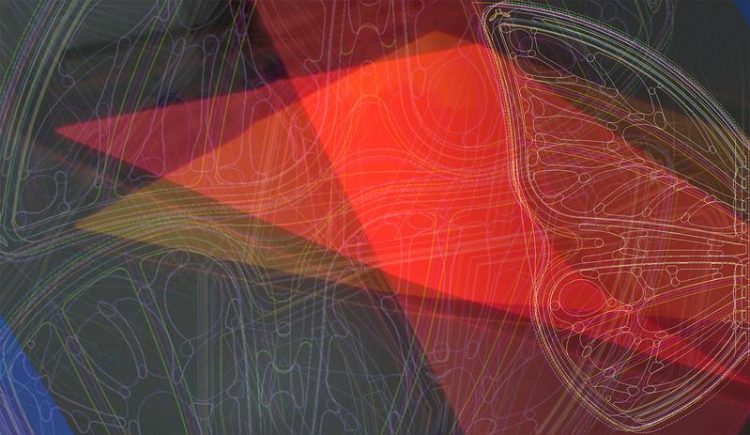A variety of designs for OLED lighting in one easy kit

OLED Lighting Design Sample Kit © Fraunhofer FEP, Picture in printable resolution: www.fep.fraunhofer.de/press
Up to now, OLED lighting modules have mainly been the familiar white OLED tiles for general-purpose lighting. However, automobile designers are increasingly discovering OLED technology as design elements to make their automobile brand design recognizable and unmistakable. Flexible OLED modules can be incorporated as luminous design elements in many other new and innovative fields of application.
Flexible OLEDs present designers a practically unlimited tool for creating new OLED-based luminous objects. In order to convey some of the diverse opportunities that OLEDs offer to interested designers, Fraunhofer FEP is presenting its OLED Lighting Design Sample Kit at LOPEC 2018 for the first time, in order to demonstrate the unique properties and features of OLEDs, such as their flexibility, segmentation ability, transparency, their multicolored surfaces, hybrid colors, patterns, and variable color intensities.
Jan Hesse, project manager of Sheet-to-Sheet OLED Technologies at Fraunhofer FEP, explains the opportunities for collaboration as follows: “Fraunhofer FEP offers its customers realization of customer-specific OLED modules with a wide range of features and materials for converting design ideas into luminous visual displays using OLED technology. We utilize the latest technologies and materials, and apply our extensive know-how to produce prototypes and short production runs of our customers’ desired applications.”
Fraunhofer FEP works closely with well-known OLED manufacturers in scaling up to full serial production. Moreover, FEP also shows designers both the possibilities and what the application requirements are for a given OLED design through OLED-specific design workshops.
In addition to the aesthetic possibilities for designs using OLED technology, the OLED Design Sample Kit is also intended to illustrate the functional possibilities that OLED technology offers in medical engineering and analytics, such as integrating lighting (OLED) and sensor technology (OPD) on a single component for example, thus facilitating new applications.
The scientists and designers at the Fraunhofer FEP are looking forward to specific enquiries from industry regarding development of prototypes or short-run client-specific OLED modules for innovative designs and applications.
Fraunhofer FEP at LOPEC 2018:
Exhibition booth
– Booth No. B0.320 (Fraunhofer FEP at joint OES Organic Electronics Saxony booth)
– Booth No. FO.1 SmartEEs (Fraunhofer FEP is technology partner of SmartEEs)
Conference presentation:
– Session: Processes I, Printed and flexible light emitting diodes, Room 14a
March 14th, 2018, 2:00 – 2:20 pm “Semi-transparent top-electrodes for flexible and
transparent OLED devices fabricated roll-to-roll”, Dr. Stefan Mogck
Poster:
– “Platform for sewable OLED modules”, Jan Hesse
– “CMOS-based microdisplays, imagers, and sensors enhanced by OLED/OPD integration”, Bernd Richter
Press contact:
Mrs. Annett Arnold
Fraunhofer Institute for Organic Electronics, Electron Beam and Plasma Technology FEP
Phone +49 351 2586 333 | presse@fep.fraunhofer.de
Winterbergstraße 28 | 01277 Dresden | Germany | www.fep.fraunhofer.de
Media Contact
All latest news from the category: Trade Fair News
Newest articles

Properties of new materials for microchips
… can now be measured well. Reseachers of Delft University of Technology demonstrated measuring performance properties of ultrathin silicon membranes. Making ever smaller and more powerful chips requires new ultrathin…

Floating solar’s potential
… to support sustainable development by addressing climate, water, and energy goals holistically. A new study published this week in Nature Energy raises the potential for floating solar photovoltaics (FPV)…

Skyrmions move at record speeds
… a step towards the computing of the future. An international research team led by scientists from the CNRS1 has discovered that the magnetic nanobubbles2 known as skyrmions can be…





















